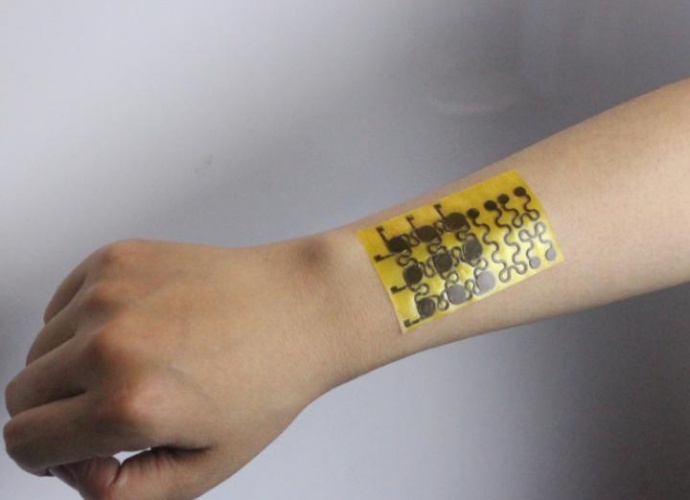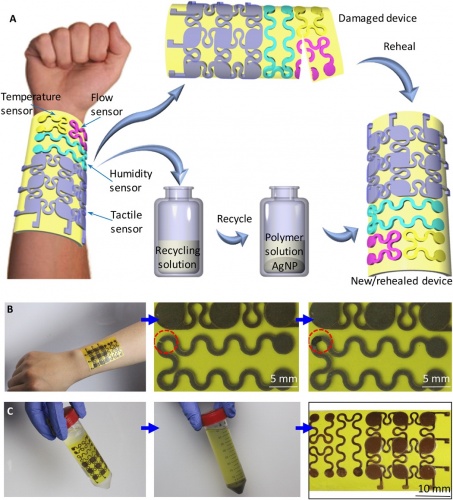
(Credit: Jianliang Xiao / University of Colorado Boulder)
The electronic skin - or e-skin - features a new type of covalently bonded dynamic network polymer, known as polyimine. By doping this material with silver nanoparticles, the CU Boulder team gave the material better mechanical strength, chemical stability and electrical conductivity. Embedded sensors in the e-skin measure pressure, temperature, humidity and air flow, while its flexibility under moderate heat and pressure allow it to be wrapped around human or robotic limbs.
To repair the e-skin after it has suffered mechanical damage, a rehealing agent consisting of three compounds in ethanol is applied with heat pressing. Because of the reversible bond formation of the material, the electronic skin can also be fully recycled by soaking in a solution. This encourages the polymers to degrade into oligomers and monomers that are soluble in ethanol, with the silver nanoparticles sinking to the bottom of the solution. The work appears in Science Advances.

(Credit: Jianliang Xiao / University of Colorado Boulder)
“What is unique here is that the chemical bonding of polyimine we use allows the e-skin to be both self-healing and fully recyclable at room temperature," said research lead Jianliang Xiao.
"Given the millions of tons of electronic waste generated worldwide every year, the recyclability of our e-skin makes good economic and environmental sense."
According to the team, the eco-friendly technology could find broad applications in robotics, prosthetics, health care, and human-computer interfaces.
"Let's say you wanted a robot to take care of a baby," said Wei Zhang, chemistry and biochemistry Associate Professor at CU Boulder. "In that case you would integrate e-skin on the robot fingers that can feel the pressure of the baby. The idea is to try and mimic biological skin with e-skin that has desired functions."





Poll: Should the UK’s railways be renationalised?
Rail passenger numbers declined from 1.27 million in 1946 to 735,000 in 1994 a fall of 42% over 49 years. In 2019 the last pre-Covid year the number...